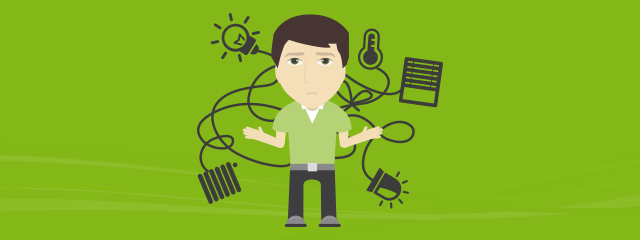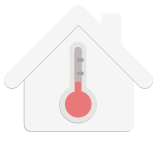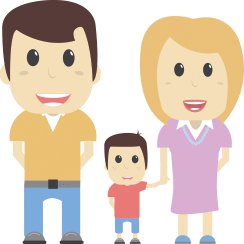
The Technical Tangle: Why Simplicity Is The Key To Smart Home Success
There’s a chronic problem in the smart home industry at the moment. We’re so busy squabbling about standards and quarrelling over compatibility that we’ve almost lost sight of why we started in the first place.
Wondering what we mean? Try this:
Write down the first three names that come to mind when you think of Smart Homes.
Of the three solutions or brands that came to mind, are there any (or all?) that control only a single aspect of a home, such as heating or lighting? Secondly, can your three solutions all integrate with each other or does each have a separate app and speak a different ‘language’?
Navigating the Maze
We all agree that automation should be simple, yet the consumer is still faced with a maze of solutions. Within this maze, there are three discernible paths. Arguably, the route that’s most accessible to the majority of consumers is single solution or ‘point’ products.
‘Point’ products are usually quite easy to understand. Most consist of a single product in a box with a single app to accompany it. The problem is that they’re incompatible with the way we use our homes (in a sense). We don’t choose between heating or lighting. We have both because we need both.
 Let’s imagine you buy a smart thermostat. You’re delighted with it, it’s proving really easy to use. You start Googling other smart products, and before you know where you are, you’ve got yourself a set of colour changing light bulbs, a sleek looking smart security camera, and a brainy smoke alarm for good measure. There’s suddenly three more apps for you to manage, and god forbid Granny should come to stay because there’s no way she can navigate a smartphone to adjust the heating.
Let’s imagine you buy a smart thermostat. You’re delighted with it, it’s proving really easy to use. You start Googling other smart products, and before you know where you are, you’ve got yourself a set of colour changing light bulbs, a sleek looking smart security camera, and a brainy smoke alarm for good measure. There’s suddenly three more apps for you to manage, and god forbid Granny should come to stay because there’s no way she can navigate a smartphone to adjust the heating.
The logical step here would be to find a way to manage of all these standalone solutions. There are plenty of options for bringing a range of separate products together into a single cloud in the form of smart hubs. They promise to help keep things under control, and the user can usually create rules to determine how different sub-systems work together.
The other alternative is an ecosystem solution. Ecosystems offer a complete solution, managing almost every aspect of your home from a central ‘brain’ or core. There’s only one app, and systems such as your heating, lighting, and security work in harmony in order to maximise efficiency and lower running costs.
Are We Really Connected?
 How many devices do you own that are connected to the Internet? A phone? Tablet? Laptop? Perhaps a Smart TV?
How many devices do you own that are connected to the Internet? A phone? Tablet? Laptop? Perhaps a Smart TV?
We are the common denominator of our ‘connected’ devices; they are all connected to us, but not to each other, resulting in a discord between the ‘connected dream’ and the current reality.
The thing is, we shouldn’t be the ones at the centre, trying to juggle increasing demands from an ever growing number of connected devices. We should be focusing on actually living instead of optimising, analysing and controlling every aspect of our lives.
Smart Home Consumers
At the start of this post, we mentioned the importance of shifting our perspective from products to people. This is because the majority of consumers really don’t care about the minutiae of technical details. Most people don’t buy the latest iPhone for the M9 motion coprocessor. They buy it for the benefits it will bring them – it’s faster, performs better and the battery lasts longer.
If we break it down even further, it becomes apparent that humans’ needs haven’t changed all that much since the caveman days. Of course there’s less focus now on building fires and keeping a watch for hungry bears, but the need for shelter, warmth, security and comfort haven’t changed.
Humans are storytellers by nature. We absorb and pass down information with meaning and emotion. We’re not programmed to focus on numbers, so why would we care if our home is talking Zigbee or Z-Wave? We simply want a warm, safe place to rest our head at the end of the day and if we can use technology to make our lives at home easier, safer and more comfortable, so much the better.
